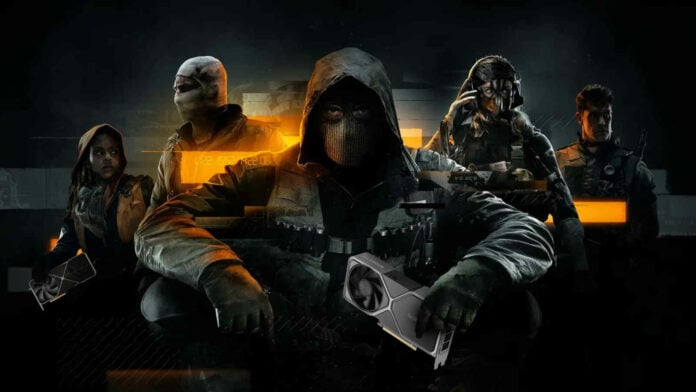Nvidia has been hard at work behind the scenes, rolling out its G-Sync Compatible certification to more monitors and widening DLSS 3 support in games. As usual, the arrival of a new Game Ready driver also brings optimisations for new and upcoming titles.
Call of Duty: Black Ops 6 is the headline for GeForce Game Ready 566.03 drivers, as Nvidia ensures support for Activision’s upcoming shooter ahead of its October 25 release date. Dragon Age: The Veilguard follows shortly after on October 31 and brings with it DLSS 3, Reflex, and Ray Tracing tech.
If you’re not a fan of waiting, then you can tuck into Team Green’s optimisations for Alan Wake 2: The Lake House, available today with DLSS 3.5 and Ray Reconstruction. Alternatively, there are a bunch of GeForce Experience one-click Optimal Settings for Dragon Ball: Sparking! Zero, NBA 2K5, and Silent Hill 2 ready and waiting.
Additionally, the following games are getting DLSS 3, DLAA, and Reflex support:
- Horizon Zero Dawn Remastered – DLSS 3, DLAA, and Reflex
- No More Room In Hell 2 – DLSS 3, DLAA, and Reflex
- Red Dead Redemption – DLSS 3 and Reflex
- The Axis Unseen – DLSS 3 and Reflex
It’s not all about games but the screens you play them on. Thanks to Nvidia, we have 32 newly validated G-Sync Compatible gaming monitors offering a range of variable refresh rate targets (VRR):
| Manufacturer | Model | VRR Range |
| Dell | AW2725DM | 48-180Hz |
| Funai | FGM-25F270 | 48-180Hz |
| I-O Data | GCQ271UD | 59-240Hz |
| I-O Data | LDQ271JA | 59-180Hz |
| LG | 32G810SA | 48-144Hz |
| Panasonic | OLED TVs Z85A | 40-144Hz |
| Panasonic | OLED TVs Z90A | 40-144Hz |
| Panasonic | OLED TVs Z95A | 40-144Hz |
| Philips | 48OLED789 | 40-120Hz |
| Philips | 55OLED789 | 40-120Hz |
| Philips | 55OLED909 | 40-144Hz |
| Philips | 65OLED789 | 40-120Hz |
| Philips | 65OLED909 | 48-144Hz |
| Philips | 65OLED909/12 | 48-144Hz |
| Philips | 65OLED959 | 40-144Hz |
| Philips | 77OLED789 | 40-120Hz |
| Philips | 77OLED899 | 40-144Hz |
| Philips | 77OLED909 | 40-144Hz |
| Philips | 48OLED759/769/779 | 40-120Hz |
| Philips | 65OLED759/769/779 | 40-120Hz |
| Philips | 66OLED759/769/779 | 40-120Hz |
| Philips | 77OLED759/769/779 | 40-120Hz |
| Philips | 42OLED809/819/849/889 | 40-144Hz |
| Philips | 48OLED809/819/849/889 | 40-144Hz |
| Philips | 55OLED809/819/849/889 | 40-144Hz |
| Philips | 65OLED809/819/849/889 | 40-144Hz |
| Philips | 77OLED809/819/849/889 | 40-144Hz |
| Samsung | G61SD | 48-240Hz |
| Samsung | Odyssey G5 | 48-180Hz |
| Samsung | Odyssey G70D | 48-144Hz |
| Samsung | Odyssey G80SD | 48-240Hz |
| Samsung | Odyssey G91SD | 48-144Hz |
You can check if your monitor is G-Sync Compatible here.
Regarding bug fixes, Nvidia only lists a single one linked to the Digital Vibrance custom setting that does not persist after reboot or wake from sleep. The brand’s clearly focusing on those upcoming releases, especially Call of Duty: Black Ops 6. I, for one, am eager to try it out, specifically developer Treyarch’s renowned zombie mode. This also means that if you don’t plan to play any of the listed titles, you won’t have to update. After all, if it ain’t broke, don’t fix it.
You can download GeForce Game Ready 566.03 drivers (711.66MB) from Nvidia’s website here. Since it’s unclear if these optimisations are also included in the beta Nvidia App, we recommend installing these old-style drivers if you plan on playing one of the newly supported games.


